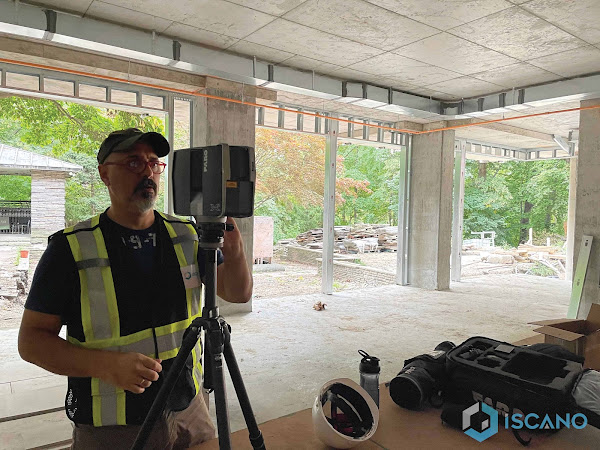Ensuring Data Accuracy in 3D Laser Scanning Projects: A Guide for Toronto's Urban Landscape
In the bustling metropolis of Toronto, where urban development thrives and architectural marvels grace the skyline, the need for precise data in construction and infrastructure projects is paramount. Among the cutting-edge technologies employed, 3D laser scanning stands out as a game-changer. However, its effectiveness hinges on the accuracy of the data it captures. In this article, we delve into the intricacies of ensuring data accuracy in 3D laser scanning projects in Toronto, exploring methodologies, challenges, and best practices.
Understanding 3D Laser Scanning
Before delving into data accuracy, let's grasp the basics of 3D laser scanning. This technology utilizes laser beams to capture the shape and details of objects or environments, creating highly detailed 3D models. In Toronto, where architectural diversity meets urban complexity, 3D laser scanning finds extensive application in construction, urban planning, heritage preservation, and more.
Importance of Data Accuracy
In Toronto's dynamic landscape, precision is non-negotiable. The accuracy of data obtained through laser scanning directly influences the success of projects. From ensuring structural integrity in building construction to precise mapping for infrastructure development, inaccuracies can lead to costly errors, delays, and safety concerns. Therefore, meticulous attention to data accuracy is imperative.
Calibration and Quality Assurance
At the heart of data accuracy lies calibration and quality assurance processes. Prior to scanning, meticulous calibration of equipment is essential. This includes verifying the alignment of laser scanners, ensuring optimal settings for capturing data, and regular maintenance to minimize errors. Quality assurance protocols must be established to validate the accuracy of captured data against reference points or ground truth measurements.
Ground Control Points (GCPs)
In Toronto's urban jungle, where varying topographies and structures abound, integrating ground control points (GCPs) is indispensable. These precisely surveyed points serve as reference markers, enabling the alignment of scanned data with real-world coordinates. Strategically placing GCPs across the scanning area facilitates accurate registration and reduces spatial distortion, especially in large-scale projects spanning diverse terrains.
Environmental Considerations
Toronto's climate, characterized by fluctuating temperatures and humidity levels, poses challenges to data accuracy. Thermal variations can affect laser scanner performance, leading to distortions in captured data. Shielding equipment from direct sunlight and regulating ambient conditions within scanning environments mitigate these effects. Additionally, accounting for seasonal changes and environmental factors during data processing enhances accuracy and reliability.
Data Processing and Fusion
Raw data captured by laser scanners undergoes extensive processing to generate comprehensive 3D models. In Toronto's context, where urban landscapes blend historic architecture with modern infrastructure, data fusion becomes crucial. Integrating laser scan data with existing CAD models or Geographic Information Systems (GIS) ensures seamless compatibility and enhances the accuracy of composite models, facilitating informed decision-making in urban development projects.
Iterative Validation and Refinement
Data accuracy is an iterative process. Regular validation and refinement are essential to identify and rectify discrepancies promptly. Utilizing advanced software tools, such as point cloud registration algorithms and deviation analysis modules, enables thorough validation against ground truth data. Iterative refinement based on feedback enhances the reliability and precision of 3D models, aligning them closely with real-world conditions.
Collaboration and Expertise
In Toronto's multidisciplinary landscape, collaboration among experts is paramount. Engaging professionals with diverse expertise, including surveyors, architects, engineers, and data scientists, fosters comprehensive insights and innovative solutions. Collaborative frameworks facilitate data accuracy assessments from various perspectives, ensuring holistic validation and minimizing errors throughout the project lifecycle.
Compliance and Standards Adherence
Adherence to industry standards and regulatory compliance is non-negotiable in Toronto's urban development sector. Following guidelines set forth by organizations such as the International Organization for Standardization (ISO) and the American Society for Photogrammetry and Remote Sensing (ASPRS) ensures uniformity and reliability in data acquisition and processing. Compliance with local regulations and building codes further enhances project integrity and stakeholder confidence.
Continuous Training and Development
In the rapidly evolving landscape of 3D laser scanning technology, continuous training and skill development are imperative. Investing in professional development programs and staying abreast of emerging trends and advancements empower practitioners to harness the full potential of laser scanning tools. In Toronto's competitive market, proficiency in cutting-edge technologies is a cornerstone of success, driving innovation and excellence in data accuracy.
Conclusion
In Toronto's vibrant urban tapestry, where every architectural detail tells a story, the quest for data accuracy in 3D laser scanning projects is paramount. From heritage preservation initiatives to futuristic urban planning endeavors, precision is the bedrock of success. By embracing meticulous calibration, leveraging ground control points, and fostering collaborative frameworks, Toronto's stakeholders can navigate the complexities of data accuracy with confidence, paving the way for transformative developments that redefine the cityscape for generations to come.
Contact us: iScano Toronto 126 Simcoe Street, Unit 2204, Toronto, Ontario M5H 4E6 (647) 773-1341 https://iscano.com/3d-laser-scanning-toronto/




Comments
Post a Comment